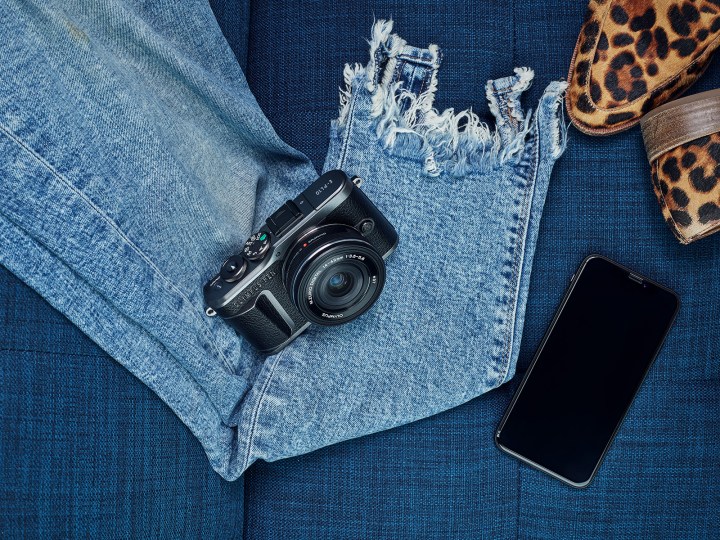
Olympus’ stylish PEN EP-L series, designated as a camera upgrade for smartphone photographers, is getting a few tweaks. Announced on February 12 alongside the new OM-D E-M1 Mark III and M.Zuiko 12-45mm f/4 Pro lens, the Olympus PEN E-PL10 has a handful of upgrades designed for the Instagram generation.
The E-PL10 has much of the same guts as the E-PL9, including the same 16-megapixel Four Thirds sensor and the same TruPic VIII processor. That combination is capable of shooting at speeds of up to 4.8 fps with continuous autofocus or 8.6 fps with focus locked.
The PEN uses a 3-axis stabilization system rated at 3.5 stops. Olympus says this simpler system allows for a smaller body than the more advanced 5-axis systems found in the OM-D series. Sensor-shift stabilization is also available for video, which the E-PL10 can shoot at 4K and 30 fps.
Outside of some tweaks to the colors, the body style hasn’t changed much either, with the back of the camera dominated by a 180-degree touchscreen with a selfie mode. The body is designed with a leather grain wrap and brushed aluminum and weighs around 13.5 ounces.
So what has changed? The PEN E-PL10’s built-in art filters can now be customized, with a slider that allows the photographer to adjust the intensity of the effect — it’s a perk for Instagram fans, but feels more like a firmware update than a brand new camera.
The E-PL10 also adds a silent shutter mode for more discrete shots using the electronic shutter, however. Panoramas have also been extended to a complete 360-degree view.
The OI Share app, which connects with the camera’s built-in Wi-Fi and Bluetooth, has also been updated. The app now knows what camera is connected, adjusting the options and instructions based on the linked camera.
The PEN E-PL10 has little to entice E-PL9 users to upgrade, but sits at a similar spot as its predecessor as a simple, compact and stylish camera for non-pros looking to step up from a smartphone or point-and-shoot Like it’s predecessor, the E-PL10 should be a decent camera for beginners, but may fail to offer aspiring enthusiasts sufficient room to grow.
The Olympus PEN E-PL10 starts shipping today for $600 body-only, or $700 with the M.Zuiko Digital ED 14-42mm F3.5-5.6 EZ lens. The camera body comes in three colors, listed as their Japanese names: Shiro (white), moka (tan), and kuro (black on black).



